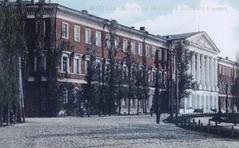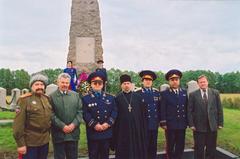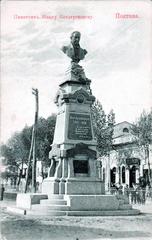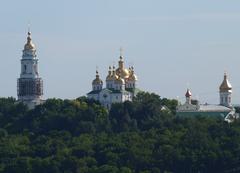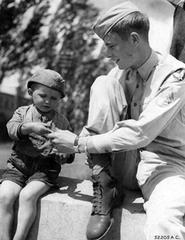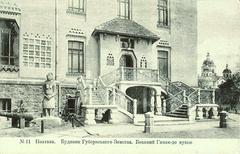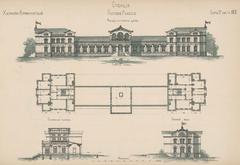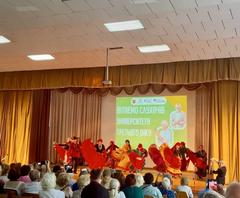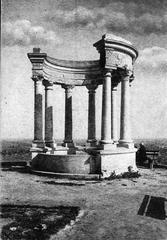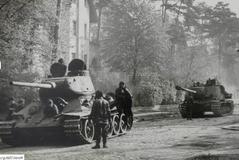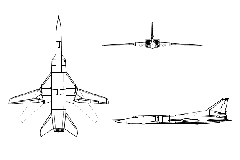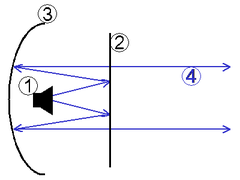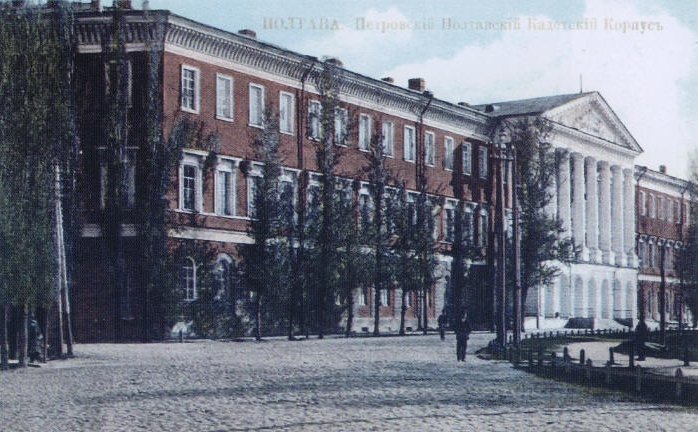
Cadet Corps in Poltava: Visiting Hours, Tickets, and Historical Significance
Date: 14/06/2025
Introduction
The Cadet Corps in Poltava stands as a distinguished emblem of the city’s military, educational, and cultural heritage. This landmark not only showcases impressive neoclassical architecture but also encapsulates centuries of Ukrainian and Eastern European history. Established in the 19th century, the Cadet Corps was designed to train the sons of noble and military families for officer roles, thus shaping the region’s administrative and military elite. Today, it remains a focal point for visitors eager to delve into Poltava’s layered past, architectural grandeur, and ongoing cultural legacy (poltavawomen.com; visitpoltava.com).
This comprehensive guide details the origins, architectural significance, visiting hours, ticketing, accessibility, and surrounding attractions of the Cadet Corps in Poltava—ensuring travelers and history enthusiasts can plan a meaningful visit.
Table of Contents
- Origins and Historical Background
- Architectural and Cultural Significance
- The Cadet Corps Through the Ages
- Visitor Information
- Travel Tips and Nearby Attractions
- Historical Impact and Legacy
- Frequently Asked Questions (FAQ)
- Call to Action
- Sources
Origins and Historical Background
The Cadet Corps in Poltava traces its roots to the late 18th and early 19th centuries, a period of transformation following the Battle of Poltava in 1709—a decisive victory for Peter the Great’s Russian forces over the Swedish army that redefined the region’s future (warfarehistorynetwork.com). The aftermath of the battle established Poltava as a strategic administrative center within the Russian Empire.
The formal establishment of the Cadet Corps occurred in the 19th century, aligning with imperial reforms to professionalize military education. The institution provided rigorous academic and military training, preparing young men from elite backgrounds for distinguished service in the Imperial Army (poltavawomen.com).
Architectural and Cultural Significance
The Cadet Corps building is a masterwork of 19th-century neoclassical architecture. Its grand 132-meter-long red brick façade, white Doric octostyle colonnade, and T-shaped, three-story layout dominate the edge of Round Square—one of Poltava’s most celebrated urban spaces. The contrasting red and white palette is said to symbolize the bloodshed of the Battle of Poltava (visitpoltava.com; fr.wikipedia.org).
This imposing structure was designed to project state authority and civic pride, while also functioning as a center for education and culture. Over the years, it has hosted military academies, public ceremonies, and community events, becoming inseparable from Poltava’s identity (mapcarta.com).
The Cadet Corps Through the Ages
Imperial Era
During its initial decades, the Cadet Corps served as one of the Russian Empire’s leading military academies. The curriculum balanced military drills with academic studies, fostering both discipline and intellect among its cadets (poltavawomen.com).
Soviet Period
The 20th century brought considerable change. After the Russian Revolution, Poltava’s strategic importance persisted, and the Cadet Corps building was repurposed for Soviet military education. It trained officers for World War II and the Cold War era, cementing its reputation as a center of military expertise (poltavawomen.com).
Contemporary Status
Following Ukraine’s independence in 1991, the Cadet Corps was recognized as a monument of national importance. Restoration and preservation efforts have maintained its architectural integrity. While interior access is often limited due to conservation work, the site remains a prominent part of city tours and cultural programming (visitpoltava.com).
Visitor Information
Visiting Hours
- Exterior: Open to the public year-round. There are no official visiting hours for viewing or photographing the exterior.
- Interior: Due to ongoing restoration, the interior is typically closed to the public. Access may be granted for special guided tours or cultural events; check with the local tourism office for updates.
Tickets
- Exterior Viewing: Free; no ticket required.
- Interior Tours: When available, tickets typically cost around 50 UAH for adults and 25 UAH for students and seniors. Group discounts may apply (visitpoltava.com).
Guided Tours
- The Cadet Corps is included in many local walking tours, which provide historical context and architectural insights. Tours are offered in multiple languages and can be booked through local agencies or the Poltava Tourist Information Center (wildtrips.net).
Accessibility
- The site is centrally located and accessible by foot, public bus, or taxi. The grounds are generally wheelchair-friendly, though some areas may be restricted during restoration.
- Those with mobility needs should check ahead regarding current access conditions.
Special Events
- The Cadet Corps often serves as a backdrop for city festivals, public commemorations, and open-air events. Announcements and schedules are available on the city’s official cultural calendar (visitpoltava.com).
Travel Tips and Nearby Attractions
Best Time to Visit: Spring through early autumn (April–October) offers the best weather for exploring the Cadet Corps and Poltava’s other attractions (nomadicmatt.com).
Getting There: The Cadet Corps is centrally located at Round Square, accessible on foot from the city center, or by bus, minibus (marshrutka), or taxi.
Nearby Attractions:
- Monument of Glory: A neoclassical column at the heart of Round Square, commemorating the Battle of Poltava (visitsights.com).
- Corpus Park: A landscaped park beside the Cadet Corps (audiala.com).
- Poltava Museum of Aviation and Cosmonautics: Celebrates regional aerospace achievements (visitsights.com).
- Literary-Memorial Museum of Ivan Kotliarevsky: Honors Ukraine’s literary legacy (visitsights.com).
- Battle of Poltava Museum: Highlights the pivotal 1709 battle (wildtrips.net).
Numerous cafes, restaurants, and shops are located nearby, providing ample amenities for visitors.
Historical Impact and Legacy
The Cadet Corps has profoundly influenced Poltava’s identity. Its alumni played key roles in military and civil administration throughout the Russian Empire and Soviet periods. The institution fostered values of discipline, civic duty, and leadership, shaping generations of Ukrainians (facts.net).
The building’s continued preservation and integration into public life reflect Poltava’s resilience—serving as both a reminder of the past and a platform for community engagement.
Frequently Asked Questions (FAQ)
Q: What are the Cadet Corps Poltava visiting hours?
A: The exterior is accessible year-round. Interior access is limited and depends on restoration schedules; check with local tourism offices for updates.
Q: Are tickets required to visit the Cadet Corps?
A: No ticket is needed for exterior viewing. Interior tours, when available, require a ticket (approx. 50 UAH for adults).
Q: Is the Cadet Corps building accessible for people with disabilities?
A: The grounds are generally accessible, but some areas may have restrictions due to preservation work.
Q: Are guided tours available in English?
A: Yes, many local agencies offer tours in English and other languages.
Q: What other historical sites are nearby?
A: The Monument of Glory, Corpus Park, Poltava Battle Museum, and the Museum of Ivan Kotliarevsky are all within walking distance.
Call to Action
Enhance your visit to Poltava by exploring the Cadet Corps and its surrounding landmarks. Use the Audiala app for audio tours, city maps, and event updates. For the most current information on guided tours and special events, consult the official visitpoltava.com website or the Poltava Tourist Information Center.
Sources
- History of Poltava – poltavawomen.com
- Cadet Corps on visitpoltava.com
- Corps des cadets de Poltava – fr.wikipedia.org
- Wild Trips: Poltava Top Attractions
- Battle of Poltava – warfarehistorynetwork.com
- A Historic Journey Through Poltava – earth-site.co.uk
- Poltava Tourist Information and Safety – visitukraine.today
